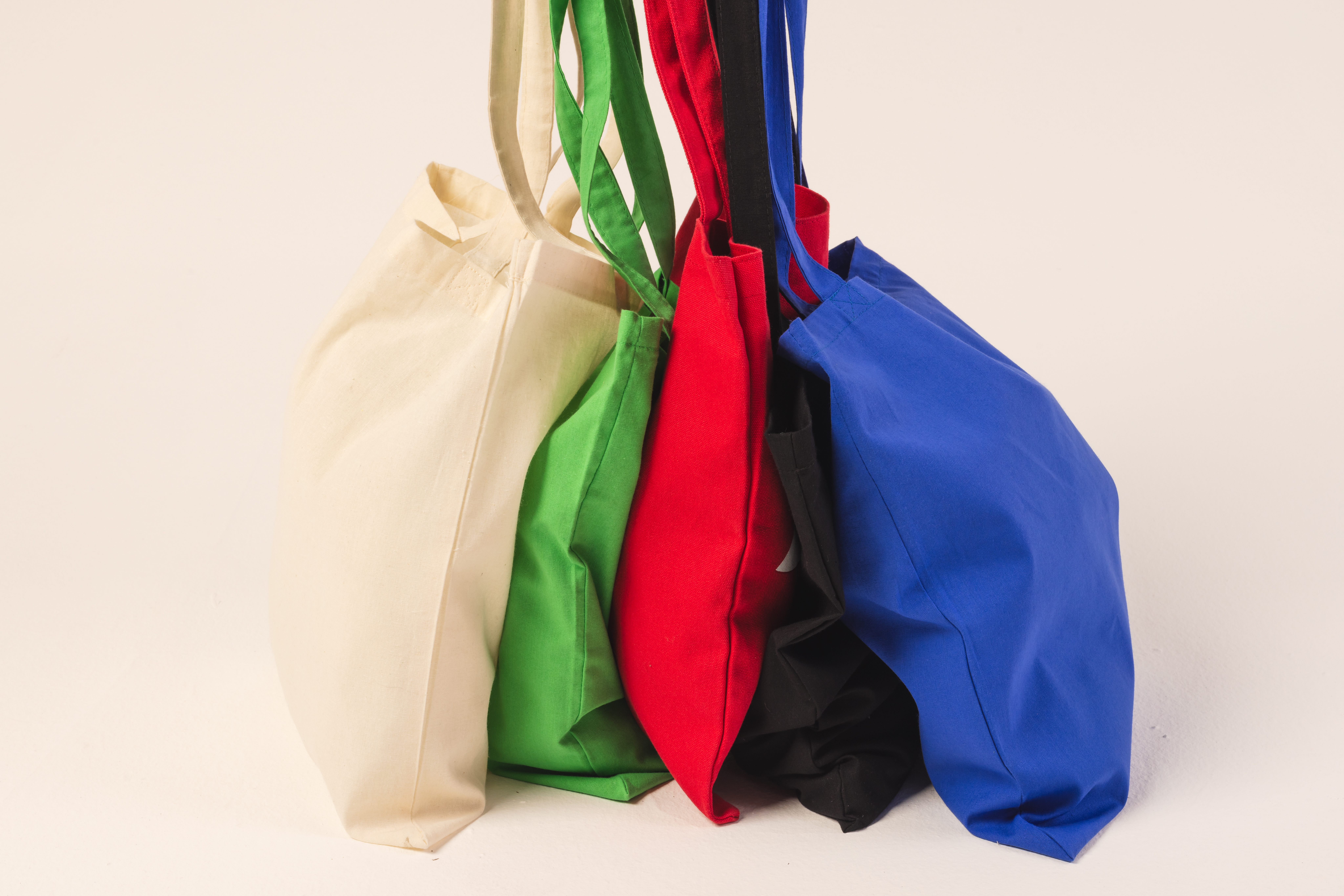Guide to Sourcing Raw Materials in the USA
For startups in the soft goods industry, sourcing raw materials is a crucial step in ensuring the quality and success of your product. Unlike larger corporations with established supply chains, startups often face unique challenges, such as limited resources and building relationships with suppliers from scratch.
Sourcing raw materials within the United States can provide significant advantages, including higher quality standards, reduced lead times, and greater compliance with regulations. This guide will provide you with the knowledge and strategies needed to effectively source raw materials in the USA, helping you to set up a reliable supply chain that supports your business goals.
The Pros and Cons of Domestic Sourcing
When sourcing materials for your business, choosing domestic suppliers can offer several advantages.
Benefits of Sourcing in the USA
- Quality Control: Sourcing raw materials domestically allows for easier and more frequent quality checks. You can visit suppliers, inspect materials firsthand, and ensure they meet your standards. This close proximity to suppliers reduces the risk of receiving substandard materials and helps maintain the integrity of your products.
- Compliance and Standards: U.S. suppliers are typically well-versed in domestic regulations and standards, which can simplify compliance issues for your business. Whether adhering to environmental regulations or ensuring product safety, working with U.S.-based suppliers helps streamline the regulatory process and reduces the risk of non-compliance penalties.
- Logistics and Lead Time: One of the most significant benefits of sourcing locally is reduced shipping times and costs. Domestic sourcing eliminates the complexities of international shipping, such as tariffs and customs delays, and ensures faster material delivery, which is crucial for maintaining a steady production flow.
- Support for Local Economy: By sourcing materials from within the U.S., you contribute to the local economy and support American jobs. This can enhance your brand’s reputation, particularly if you market your products as made with locally sourced materials, which can be a strong selling point for consumers.
Benefits of Source Raw Materials from Overseas
However, domestic sourcing also has drawbacks, leading some businesses to consider international options.
- Higher Costs: While domestic sourcing offers many benefits, it often comes with higher costs than international suppliers. Labor and production costs in the U.S. are generally higher, which can increase the overall expense of your materials. It’s important to balance these costs with the benefits of quality and compliance.
- Supplier Limitations: Depending on your specific needs, finding the right supplier within the U.S. can sometimes be challenging. Some materials may be more readily available or cheaper to source internationally. It’s crucial to conduct thorough research to identify suppliers who can meet your requirements while still operating within the U.S.
Identifying Raw Material Needs
Identifying the specific raw materials required for your product is critical in sourcing. It involves understanding the characteristics of your product, the quality standards you must meet, and the logistical considerations involved in sourcing these materials. Here’s how to identify and articulate your raw material needs effectively:
Assessing Material Requirements
- Quality Specifications: Begin by defining the quality standards your materials must meet. This includes specifying the raw materials’ type, grade, and characteristics. For instance, if you are producing a textile product, you may need materials that are durable, hypoallergenic, and available in specific colors or textures. Detailed specifications help you source materials that are fit for purpose and meet your product’s performance requirements.
- Quantity and Frequency: Determine the volume of materials needed for your production cycles and how frequently you will require these materials. Understanding your production schedule and order sizes is crucial for negotiating with suppliers and ensuring a steady supply without overstocking. Create a forecast based on your production plans, considering potential growth and seasonal fluctuations in demand.
- Budget Constraints: Establish a budget for raw material procurement, considering the cost of materials and associated expenses such as shipping and storage. Balancing cost with quality is essential; while higher-quality materials may be more expensive, they can enhance your product’s durability and appeal, potentially justifying the investment.
Types of Raw Materials
- Textiles: Textiles are a primary raw material for soft goods. This includes cotton, polyester, wool, and blends. Consider the properties of each fabric type, such as breathability, durability, and ease of maintenance. Startups should also consider the source of these textiles, whether they prefer organic, sustainable options or more conventional materials.
- Metals: If your product includes metal components, such as zippers, buttons, or frames, specify the type of metal required. This might include aluminum for lightweight applications or stainless steel for durability and corrosion resistance. Each metal type has different properties and costs, influencing your product’s performance and price.
- Plastics and Polymers: Plastics are common in various soft goods, from waterproof coatings on fabrics to synthetic buttons and fasteners. Specify the type of plastic, such as polyethylene or polypropylene, and any special characteristics like UV resistance or flexibility.
- Natural Materials: For products that require natural components, consider materials like wood, leather, and rubber. These materials offer unique aesthetic and functional benefits but may require additional considerations for sourcing sustainably and ethically.
Example Template for Raw Material Identification
| Material Type | Specifications | Quantity Needed | Supplier Options | Cost per Unit |
| Cotton Fabric | Organic, 200 GSM, Blue | 500 yards | Supplier A, B | $5 per yard |
| Metal Zippers | Stainless Steel, 6 in | 1000 units | Supplier C | $0.50 each |
| Leather | Full grain, Black | 200 square feet | Supplier D, E | $10 per sq ft |
By detailing your material needs in this way, you create a clear and actionable plan for sourcing that aligns with your product requirements and budget.
Researching Potential Suppliers
Finding the right suppliers for your raw materials ensures a reliable and quality supply chain. This involves researching various options, evaluating their capabilities, and building strong relationships. Here’s how to effectively research and select suppliers:
Where to Look for Suppliers
- Industry Associations: Joining industry associations such as the National Association of Manufacturers (NAM) or the American Apparel & Footwear Association (AAFA) can provide access to a network of reputable suppliers. These organizations often have directories and resources to help you identify potential partners.
- Trade Shows and Expos: Attending trade shows like the International Manufacturing Technology Show (IMTS) or the Sourcing at MAGIC event provides direct access to suppliers and industry experts. These events are excellent opportunities to meet suppliers face-to-face, assess their products, and establish relationships.
- Online Directories: Utilize online platforms such as ThomasNet, Maker’s Row, and Alibaba. These directories allow you to search for suppliers based on your needs, such as material type, location, and production capabilities. They often include reviews and ratings, which can help you assess the reliability and quality of the suppliers.
- Referrals and Networking: Leverage your industry contacts and network for referrals. Recommendations from trusted colleagues or industry experts can lead you to reliable suppliers with a proven track record. Networking events and professional groups are valuable resources for finding potential suppliers.
Working with Softline Brand Partners can streamline this process. They can leverage their expertise and network to help you identify and connect with the best suppliers for your business needs.
Evaluating Suppliers
- Quality Assurance: Check if potential suppliers have relevant quality certifications, such as ISO 9001. Certifications indicate that the supplier follows standardized quality management practices and can consistently deliver high-quality materials.
- Capacity and Reliability: Assess the supplier’s production capacity to ensure they can meet your volume requirements. Ask about their lead times, production processes, and how they handle large or rush orders. Reliability is crucial, especially for startups facing tighter deadlines and budget constraints.
- Reputation and Reviews: Research the supplier’s reputation in the industry. Look for reviews and testimonials from other businesses that have worked with them. Reliable suppliers often receive positive feedback on product quality, customer service, and delivery performance.
Example Checklist for Supplier Evaluation
| Criteria | Supplier A | Supplier B | Supplier C |
| Quality Certifications | ISO 9001 | None | ISO 14001 |
| Production Capacity | High | Medium | High |
| Lead Times | 2 weeks | 4 weeks | 3 weeks |
| Customer Reviews | Positive | Mixed | Positive |
| Price Competitiveness | Competitive | High | Moderate |
Building Relationships with Suppliers
Building strong, lasting relationships with your suppliers is crucial for ensuring a reliable supply chain, especially for startups in the soft goods industry. Good supplier relationships can lead to better pricing, more flexible terms, and priority service during high demand or supply chain disruptions. Here’s how to effectively build and maintain these relationships:
- Initial Contact: Introduce yourself and your business, and clearly communicate your requirements and expectations. Request samples of materials to assess quality and compatibility with your product.
- Negotiating Terms: Discuss pricing, payment terms, delivery schedules, and quality standards. Negotiating favorable terms early on can lead to cost savings and smoother transactions.
- Ongoing Communication: Regularly contact your suppliers to stay informed about material availability and potential issues. Regular communication helps build a strong relationship and ensures you can promptly address any problems.
- Performance Reviews: Conduct periodic supplier performance reviews, focusing on quality, reliability, and service. This helps identify any areas for improvement and ensures that the supplier continues to meet your needs.
By thoroughly researching and evaluating potential suppliers and building strong relationships, startups in the soft goods industry can secure a reliable and high-quality supply chain that supports their business goals and growth.
Navigating Legal and Compliance Issues
Navigating the legal and compliance landscape is essential for ensuring that your sourcing practices meet industry regulations and standards. This helps avoid legal issues and enhances your credibility with customers and stakeholders. Here’s how to manage these aspects effectively:
Regulations and Standards
Industry-Specific Regulations: Different industries have specific regulations that govern the sourcing and use of raw materials. For example, the textile industry must comply with regulations related to fiber content labeling, flammability, and environmental impact. Familiarize yourself with the regulations relevant to your industry to ensure compliance.
- Environmental Regulations: Comply with environmental regulations such as the Clean Air Act and the Clean Water Act, which govern emissions and waste management practices. Adhering to these regulations ensures legal compliance and enhances your brand’s reputation for sustainability and environmental responsibility.
- Trade and Import Laws: If you consider supplementing domestic sourcing with international suppliers, understand the applicable trade and import laws. This includes tariffs, customs regulations, and import quotas. Compliance with these laws is critical to avoid legal penalties and delays in material supply.
Contracts and Agreements
- Supply Agreements: Draft comprehensive supply agreements that cover all aspects of your business relationship with suppliers. These agreements should include terms related to pricing, delivery schedules, quality standards, and dispute resolution. Clearly defined contracts help protect your interests and provide a framework for managing the supplier relationship.
- Non-Disclosure Agreements (NDAs): Protect your intellectual property and proprietary information with NDAs. These agreements ensure that your suppliers do not disclose confidential information about your products or business practices to third parties. NDAs are particularly important when working with suppliers who may also serve your competitors.
- Compliance Documentation: Ensure you have all the necessary documentation to prove compliance with relevant regulations. This may include certificates of compliance, safety data sheets, and environmental impact reports. Keeping thorough records helps demonstrate your commitment to legal and regulatory standards and can be crucial during audits or inspections.
- Due Diligence: Conduct thorough due diligence on your suppliers to ensure they comply with legal and regulatory requirements. This includes checking their certifications, reviewing compliance records, and assessing their adherence to ethical sourcing practices. Due diligence helps mitigate risks and ensures your supply chain is robust and reliable.
By understanding and addressing the legal and compliance aspects of sourcing, startups in the soft goods industry can build a solid foundation for their operations. This proactive approach helps avoid legal issues and supports a sustainable and ethical business model.
Leveraging Technology for Sourcing
In today’s fast-paced market, leveraging technology can significantly enhance the efficiency and effectiveness of sourcing raw materials. For startups in the soft goods industry, using advanced tools and systems can streamline procurement processes, improve supplier management, and ensure that you stay competitive. Here’s how to make the most of technology in your sourcing activities:
Sourcing Platforms
- Online Marketplaces: Utilize online marketplaces such as ThomasNet, Maker’s Row, and Alibaba to find various suppliers and raw materials. These platforms allow you to search for specific materials, compare suppliers, and read reviews from other buyers. This access to a global network of suppliers can help you find the best materials at competitive prices.
- ThomasNet: A comprehensive industrial supplier directory that provides detailed information on suppliers, including capabilities, certifications, and customer reviews.
- Maker’s Row: Focuses on connecting small manufacturers and suppliers in the U.S., which is ideal for startups looking to source locally.
- Alibaba is a global marketplace that offers a wide range of products and suppliers. It is useful for finding unique materials and negotiating bulk purchases.
- Supplier Portals: Implement supplier portals to facilitate direct communication and transactions with your suppliers. These portals enable you to place orders, track deliveries, and manage invoices in a centralized online platform, improving efficiency and transparency in your supply chain.
Data Analytics
- Supply Chain Analytics: Use supply chain analytics tools to gain insights into your sourcing and procurement processes. These tools can help you analyze data on supplier performance, material costs, and delivery times, allowing you to identify trends and make data-driven decisions to optimize your supply chain.
- Tableau: Provides powerful data visualization capabilities to help you analyze and interpret supply chain data.
- SAP Supply Chain Management: Offers comprehensive analytics tools to monitor and optimize your supply chain.
- Demand Forecasting: Employ demand forecasting tools to predict future material requirements based on historical data and market trends. Accurate forecasting helps you maintain optimal inventory levels, reducing the risk of stockouts or excess inventory, which can save costs and improve production efficiency.
- Forecasting Tools by HubSpot: This company offers demand planning and forecasting tools that can be integrated into your supply chain management system.
- IBM Demand Forecasting: Provides advanced analytics for accurate demand forecasting and inventory management.
Automation Tools
- Inventory Management Systems: Implement automated inventory management systems to track stock levels, manage reorder points, and generate purchase orders automatically. These systems help you maintain an accurate and up-to-date view of your inventory, reducing manual errors and ensuring that you always have the materials you need for production.
- Fishbowl Inventory: An inventory management software that integrates with various accounting and e-commerce platforms, suitable for small to medium-sized businesses.
- Zoho Inventory: Offers features like automated reorder points, multi-channel inventory management, and integration with various sales platforms.
- Order Processing Software: Use order processing software to streamline the management of purchase orders, supplier invoices, and payment tracking. This software automates many manual tasks associated with order processing, reducing administrative workload and speeding up the procurement cycle.
- QuickBooks Commerce: Provides a comprehensive solution for managing orders, inventory, and supplier relationships.
- TradeGecko: An inventory and order management platform integrating e-commerce and accounting systems.
Leveraging technology in sourcing improves efficiency and reduces costs, but it also provides a competitive edge by enabling better decision-making and faster response times. Integrating these tools into your sourcing strategy allows you to streamline operations and focus on growing your business.
Case Studies and Examples
Examining case studies and real-world examples can provide valuable insights into how startups in the soft goods industry successfully navigate the challenges of sourcing raw materials. These examples highlight practical strategies and lessons learned that can be applied to your sourcing efforts.
Success Stories/Scenarios
Small Business Case Study: Sustainable Textile Sourcing
A small startup focused on producing eco-friendly apparel successfully sourced sustainable fabrics from U.S.-based suppliers. The company identified suppliers that offered organic cotton and recycled polyester by attending trade shows and leveraging online directories like Maker’s Row. The startup ensured a reliable supply of high-quality materials that met its sustainability goals through detailed negotiations and establishing clear quality standards.
Key Takeaways:
- Attending industry events and utilizing online resources can help identify suitable suppliers.
- Building relationships and setting clear quality expectations are crucial for ensuring material consistency.
Large Enterprise Example: Streamlining Supply Chain Operations
A larger soft goods company sought to improve its supply chain efficiency by transitioning to domestic suppliers for key materials. The company utilized supply chain analytics to identify bottlenecks and optimize inventory management. Integrating ERP systems and automation tools reduced lead times and improved order accuracy, leading to significant cost savings and enhanced product quality.
Key Takeaways:
- Leveraging supply chain analytics and automation tools can significantly enhance efficiency and reduce costs.
- Switching to domestic suppliers can reduce lead times and improve quality control.
Lessons Learned
Challenges Faced: Both small and large businesses encountered challenges such as higher costs for domestically sourced materials and initial difficulties in identifying suitable suppliers. They overcame these challenges by prioritizing quality and reliability over cost and building strong relationships with suppliers.
Key Takeaways:
- Prioritize Quality: While domestic sourcing may have higher costs, quality control, and compliance benefits often outweigh the initial investment.
- Build Strong Relationships: Maintaining good relationships with suppliers helps ensure a consistent supply of materials and can lead to better terms and priority service during high-demand periods.
- Utilize Technology: Embracing technology for supply chain management, inventory control, and data analytics can streamline operations and provide valuable insights for decision-making.
By studying these case studies and applying the lessons learned, startups in the soft goods industry can enhance their sourcing strategies, improve supply chain efficiency, and position themselves for long-term success.
Recap of Key Points
- Understanding the Importance of Domestic Sourcing:
- Sourcing locally provides advantages such as stringent quality control, easier compliance with U.S. regulations, and reduced logistics costs and lead times.
- Identifying Raw Material Needs:
- Clearly define your material requirements, including quality, quantity, and budget constraints, to meet product specifications and customer expectations.
- Researching Potential Suppliers:
- Utilize various resources such as industry associations, trade shows, online directories, and referrals to identify and evaluate potential suppliers. Establish criteria for assessing supplier quality, capacity, and reliability.
- Building Relationships with Suppliers:
- Develop strong relationships with suppliers through clear communication, regular performance reviews, and negotiating favorable terms. These relationships are crucial for ensuring a consistent supply of quality materials.
- Navigating Legal and Compliance Issues:
- Conduct thorough due diligence and draft comprehensive contracts and NDAs to ensure compliance with industry regulations, environmental standards, and trade laws.
- Leveraging Technology for Sourcing:
- Utilize sourcing platforms, supply chain analytics, and automation tools to streamline procurement processes and improve supply chain efficiency.
- Case Studies and Examples:
- Learn from real-world examples of successful sourcing strategies and apply the lessons learned to enhance your sourcing practices.
Final Tips
Flexibility and Adaptability: Remain flexible in your sourcing approach to adapt to changing market conditions and supplier dynamics. Preparing to pivot can help you manage disruptions and maintain a steady supply chain.
Continuous Improvement: Foster a culture of continuous improvement by regularly reviewing and optimizing your sourcing strategies and supplier relationships. This helps maintain high standards and drive innovation.
Invest in Planning: Investing time and resources in meticulous planning and research is crucial for building a reliable supply chain. Thorough preparation helps anticipate challenges and secure a stable foundation for business operations.
Encouragement to Plan Meticulously
Sourcing raw materials is more than just a procurement task; it’s a strategic function that can significantly influence your product quality, brand reputation, and market success. By planning meticulously and leveraging available resources and technologies, you can build a robust and resilient supply chain that supports your business growth and sustainability.
Following the guidance in this article and making informed decisions, you can ensure that your startup is well-positioned to thrive in the competitive soft goods industry. Take the time to research, plan, and build strong supplier relationships, and you’ll set the stage for long-term success and market leadership.
Softline for Start-Ups Resource Guide
Building a Brand in the Soft Goods Market
Intellectual Property Protection in Fashion and Soft Goods
Concept to Prototype: Softline’s Design and Sampling Services










